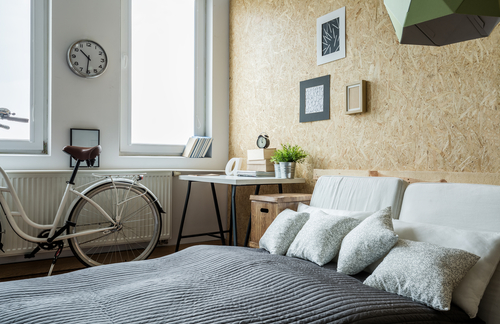What is an anglebead, and what does it do? A metal band that surrounds an external corner within a room is known as an anglebead. It directly adheres to the plasterboard and creates a perfect corner. It’s attached to the plasterboard before being skim coated with plaster.
Looking to fix up your drywall angle bead using plaster? Look no further! ADA Fastfix has you covered with all the plaster beading you need to get the job done right.
Is it tough to hang a corner anglebeam to plasterboard?
This all depends on the way you’ll attach the anglebead to the plasterboard. Here are a number of options:
- Scrim tape
- Hook-on anglebead
- Spray-on glue
- Screw fix
- Nail fix
- Staples
I found the screw and nail technique more challenging. This was due to the fact that while holding up the anglebead, I had to struggle with a nail/screw and a hammer/drill all at once. This can be remedied by using your elbow to hold the anglebead in place while you also grip a screw/nail with that hand.
Why would I want to take care of it myself?
It takes just a few minutes to complete and the supplies are extremely low-cost. The good news is that if something isn’t right, it’s simple to remove the beads and try again, with little damage to the plasterboard. If you’re stumped, go ahead and try beading one up. If something goes wrong and you don’t understand how to do it, ask the plasterer to help. However, by following the methods and techniques outlined on this page, I’m confident that you’ll pick it up quickly.
If you want to skim coat the boards yourself, rather than paying a professional plasterer to do it, be sure you follow these steps. He shouldn’t mind this since he will be able to assess it effectively before skim coating the plasterboard.
What equipment will I require?
There are no special or pricey instruments required for this project as a DIYer:
- Scissors
- Angle bead
- Tin snips
- Tape measure
Helpful Tip
Only on outer angles, internal corners don’t require beading. Instead, scrim tape can be used.
HOW TO ATTACH THE ANGLEBEAD TO PLASTERBOARD
Nail, screw, staple, adhesive, wet plaster and glue are just a few of the ways to fasten anglebead to plasterboard. These all have advantages and drawbacks. I liked one approach in particular, which is why I’ll tell you about it below. I’ll cut to the chase and go straight to my preferred approach, but I’ll also make a note of the other methods at the bottom of this page just in case you’re curious.
Attaching Anglebead with scrim tape
It’s critical to comprehend the different types of fixings that may be used to attach anglebead to the plasterboard. The beading is firmly secured after the skim coat of plaster has been applied. Simply said, the fixing method used is only a stopgap solution until the skim coat is finished.
BEADING THE BEAD TO A PLASTERBOARD CORNER
After everything is in place, carefully set the waxed canvas over the plasterboard. If it’s necessary to remove the scrim, do so after pressing it down. After adhering to the scrim tape, you may utilize the anglebead. There’s no need to wait for the scrim tape to dry before using it.
Helpful Tip
When attaching the scrim to the angle bead, place the metal angle bead on the window sill.









